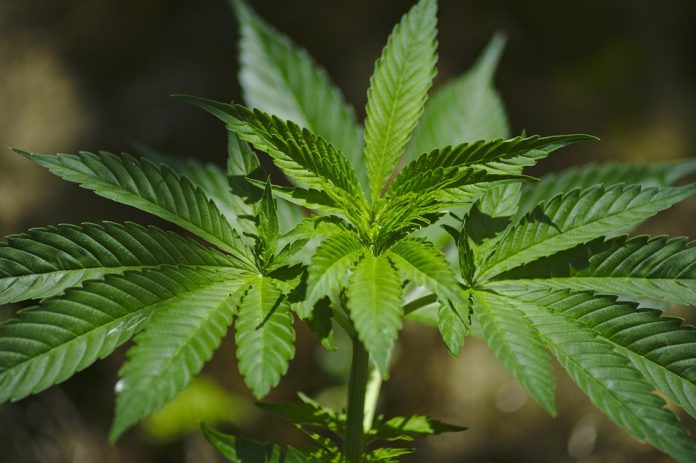U.S, January 4, 2021 (CANNABISTECH) The moments in cannabis science that changed history.
Cannabis is going through a revival as society slowly adapts to its valuable medicinal potential. This renewed interest in the plant’s powers can be attributed to several key scientific breakthroughs over the last few decades. The current regulatory environment comes largely from a deeper understanding of cannabis, cannabinoids, and the human body.
So, what are the modern-day scientific discoveries that have helped push cannabis forward? The growing regulatory space for legal cannabis and the exploding number of medicinal applications come from three key breakthroughs over the last forty years in cannabis science.
THE DISCOVERY OF THE ENDOCANNABINOID SYSTEM
The first modern finding in the history of cannabis science was thanks to a decades-long pursuit of cannabis’s mechanism of action within the human body.
Up until 1964, the ways in which cannabis worked on the human body remained a mystery. How did the plant create altered states of consciousness? How did it impair cognition or lead to medicinal benefits? However, in 1964, Yechiel Gaoni and Raphael Mechoulam successfully isolated THC and several other components of hashish. Gaoni and Mechoulam dubbed the compounds “cannabinoids” and reported that they worked within an “intrinsic neuronal signaling system,” which they called the endogenous cannabinoid system or the endocannabinoid system.
But the discovery and isolation of the first cannabinoid was only part of the scientific breakthrough. It took researchers another 26 years to confirm the existence of the proposed endocannabinoid system. Its initial phases began in the 1980s when researchers discovered hints of both the CB1 and CB2 receptors, but it was not until 1990 that these ideas were finally confirmed.
Notably, when that confirmation did come, it was once again through Mechoulam’s laboratory, which had continued its pursuit of the plant since its work with hashish in the 1960s. By 1990, Mechoulam’s team had isolated and cloned the first cannabinoid receptor, known as CB1. Soon after, they did the same for cannabinoid receptor two, or CB2. Finally, there was scientific proof of the elusive endocannabinoid system.
The Mechoulam researchers discovered that the endocannabinoid system does not exist solely to process the compounds of plants. Instead, it functions as a whole network of endocannabinoids and endocannabinoid receptors. The discovery of the endocannabinoid means we now have a better understanding of cannabis and many other essential biological systems, including pain, mood, memory, inflammation, reproduction, and more.
THE FIRST GENETIC SEQUENCING OF CANNABIS SATIVA
The second major breakthrough in the recent history of cannabis science was the plant’s genetic sequencing. In 2011, a team of researchers led by Harm van Bakel and Jake M. Stout published “The draft genome and transcriptome of Cannabis sativa” in Genome Biology. Considering the highly debated speciation of cannabis over the centuries and the explosion of cultivars since legalization began, genetic sequencing of the DNA and RNA represented a massive scientific development.
The Canadian team worked with the cultivar Purple Kush and reported “a draft haploid genome sequence of 534 Mb and a transcriptome of 30,000 genes.” They also compared the Purple Kush sequence against a hemp cultivar, discovering that many genes responsible for cannabinoid expression were much more strongly expressed in the THC-rich variety than in hemp.
As per the 2011 publication, “The availability of the Cannabis sativa genome enables the study of a multifunctional plant that occupies a unique role in human culture. Its availability will help develop therapeutic marijuana strains with tailored cannabinoid profiles and provide a basis for the breeding of hemp with improved agronomic characteristics.”
APPROVAL OF CANNABIS-BASED PHARMACEUTICAL IN THE U.S.
The third and final modern scientific breakthrough in cannabis science was perhaps not a new one, but a renewed one. In 2018, the U.S. Food and Drug Administration approved Epidiolex, the first cannabis-based drug in modern history.
The approval of Epidiolex was a breakthrough for what it represents, not so much for the approval itself. After all, humans have a long history of using cannabis for various medical applications, including seizures. The first modern description of cannabis for seizures, written by W.B. O’Shaughnessy, dates back to 1843. There are also several other, older cannabis-based drugs approved elsewhere, such as Sativex for the spasms associated with multiple sclerosis.
So why did Epidiolex qualify as a breakthrough? For America, it was a turning point in how society and the federal government viewed cannabis. As per FDA Commissioner Scott Gottlieb, M.D., “This approval serves as a reminder that advancing sound development programs that properly evaluate active ingredients contained in marijuana can lead to important medical therapies.” It was the first admission by an American regulatory body that cannabis could deliver benefits, not just risks.
The 2018 approval by the FDA has forced several other federal regulatory bodies to reconsider and reclassify cannabis. This has led to significant changes within the Drug Enforcement Agency, the United States Department of Agriculture, and others. More is to come.
CANNABIS SCIENCE ONLY JUST BEGINNING
These three breakthroughs are only the tip of the iceberg, with so much more below the surface, waiting for deeper scientific study. With more than 400 terpenes and 100 cannabinoids linked to cannabis, these all warrant exploration in isolation and together within the Entourage Effect. How do they work therapeutically? How do they influence recreational experiences? There is much, much more to learn about this unique medicinal plant.







